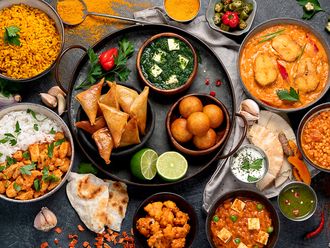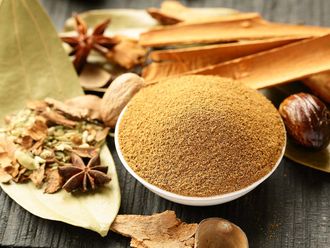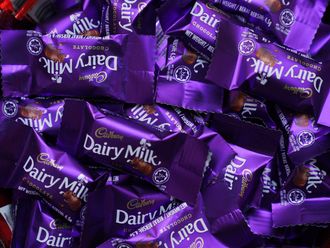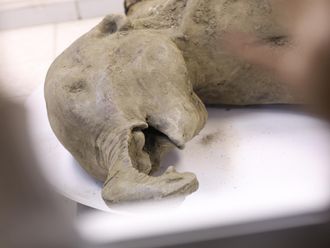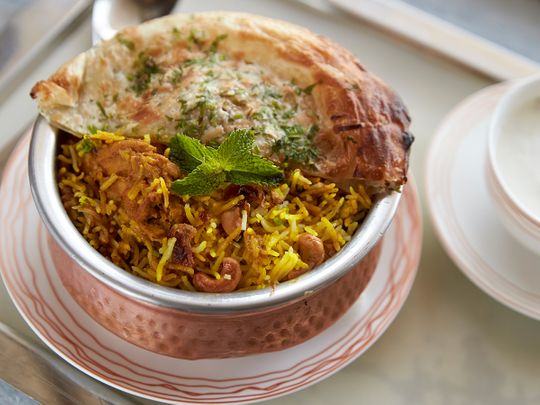
Nothing quite represents India’s unity in diversity as its culinary streams do. A rice preparation popular in North India, will invariably have its cousin in the southern part of the country. The sambar (lentil curry) from Tamil Nadu will have its own rendition in a Punjabi household. Gol-gappe (a popular savoury street snack) from Delhi are called Pani Puri in Mumbai, and bhajjis (fried fritters) of South India are called tele-bhaja in Bengal. Neer (South Indian yoghurt based spiced drink) is known as Matha in the eastern Indian state of Bihar and Chaach in Gujarat.
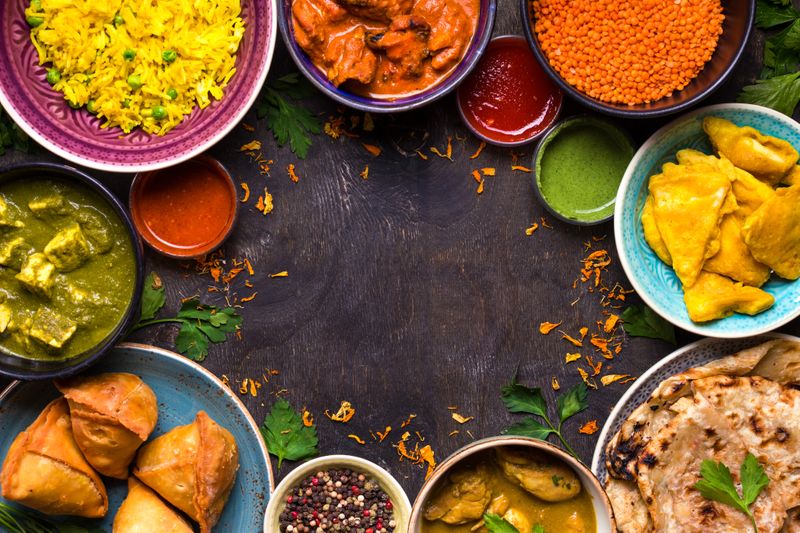
One such slow-cooked rice-based dish that has dominated the global cuisine is biryani. Its origins are debatable, as many believe this dish originated in Iran and travelled to the rest of the world. However, it was the Mughals who introduced biryani to India.
During the 15th century this aromatic rice dish was cooked in large vessels. Mughal chefs had found a way to feed the masses by combining meat and rice in spices. It is not known if biryani was initially a dish cooked for the nobles or the masses. However, biryani remains a communal dish that unites nearly 1.4 billion people of India, within and abroad.
The takeover of Indian regional biryanis
Almost every region has its own kind of biryani, which varies in taste and cooking style. There is not one kind of biryani that all of India likes, there are atleast 26 regional varities, if not more. Every household has its special way of preparing this dish and many family recipes run down generations, some remain a secret.
The South Indian state of Hyderbad has its version – Hyderabadi biryani. This city’s recipe was passed down from the kitchens of the Nizam of Hyderabad. Acclaimed as the fieriest biryani, the two varieties of this dish are - kacchi (raw) and pakki (cooked). For a kachhi biryani, the meat is marinated overnight in spices and curd, whereas the meat is marinated for a shorter time for a pakki biryani.
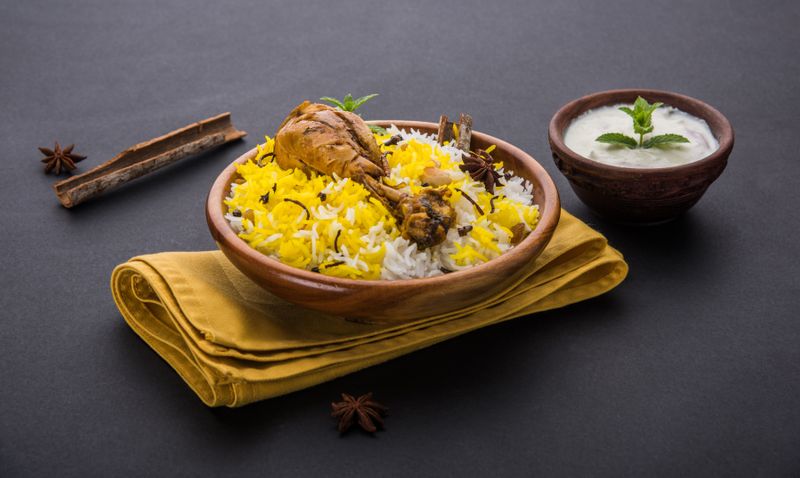
Tehri or Tehari biryani is the only recipe that settles the debate of vegetarian biryani. Unlike its counterparts across India, this biryani is meat free and instead uses locally grown vegetables with fragrant spices. It was apparently developed for the Hindu bookkeepers of the Muslim Nawab rulers in South Asia, and is popular across Uttar Pradesh, Kashmir and other Indian states.
The Kolkata biryani is well known for its subtle flavourfulness and highly reminiscent of its Mughlai roots. Historians believe that the meat in the biryani was replaced with potatoes because of an economic crisis during the last Awadhi reign of Nawab Wajid Ali Shah (1822-1887). And, since then, Kolkata biryani’s recipe includes potatoes cooked to have a crispy outer layer, which helps hold the coated spices well because of the texture. The legacy of the Lucknowi biryani involves meat being stewed in meat stock to tenderise it. Then the meat is cooked and later layered with rice, to be cooked in dum or sealed with steam style.
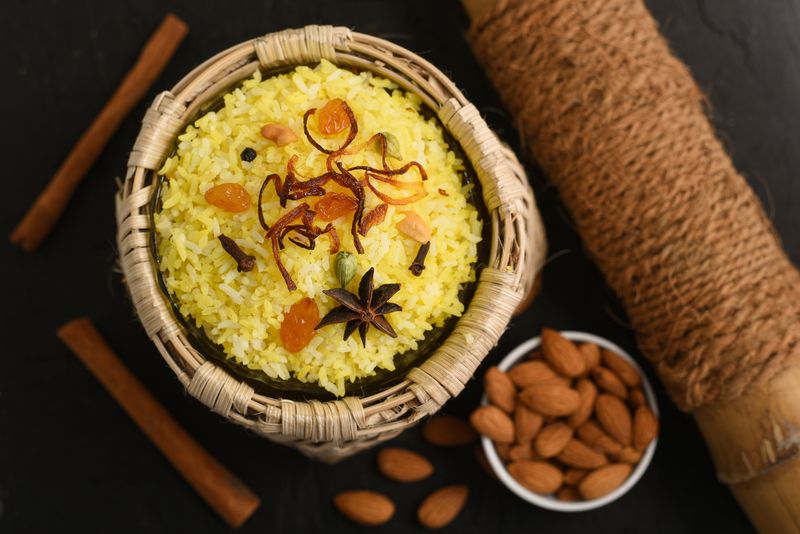
The famous biryani from Kerala – Thalaserry Biryani, is sweet and savoury. Chicken wings, cashews, raisins, Malabar spices and fennel seeds make this a regional favourite. What makes it different? The meat cooked in gravy is mixed only when rice is being served.
From the western state of Gujarat comes the Memoni biryani, that competes with Hyderbadi biryani’s spice level. High on the Scoville spice scale, this biryani has goat meat chunks, potatoes cooked with yoghurt, and then added to the rice, which is cooked partially. This recipe belongs to the Memon community of the Gujarat-Sindh region.
Winning hearts over the years is Mumbai biryani, with a burst of flavour in every spoon. This biryani uses a lot of fried potatoes, dried plums, and kewra (screw pine) essence or water for the sweet tangy flavour.
A biryani is a biryani is a biryani. Not a pulao. What makes a biryani? The cooking style of meat and rice with regional spices and fried onions usually served with a salan (thin gravy) or raita (yoghurt based side dish).
To celebrate India’s 75 years of independence, Food by Gulf News brings the legendary 63-year-old chicken biryani recipe, from Mumbai's famed Khyber restaurant, with its only branch outside India at Duke The Palms in Dubai.
Head Chef Faizan Ali said: “There are many ways to cook biryani in India. A good biryani is judged on the quality of rice, of course the quality of the meat and blend of the spices. In Khyber, we make the biryani with passion and our Khyber biryani masala. We use the masala recipes from 1958, when Khyber first opened in Mumbai. The concept we had started in our first branch, in Mumbai. Every generation of chefs are trained on the original recipes from 1958."

There are many ways to cook biryani in India. A good biryani is judged on the quality of rice, of course the quality of the meat and blend of the spices. In Khyber we make the biryani with passion and our Khyber biryani masala. We use the masala recipes from 1958, when Khyber first opened in Mumbai. The concept we had started in our first branch, in Mumbai. Every generation of chefs are trained on the original recipes from 1958."
Khyber's Chicken Biryani Recipe
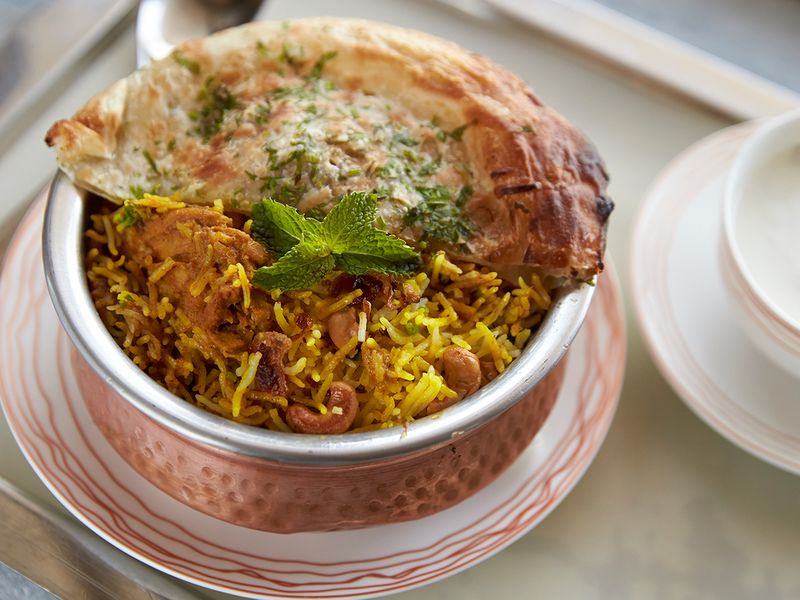
Ingredients:
800 gms chicken thigh
2 cups long-grained basmati rice
3 cups water
3 cinnamon sticks
1/2 tsp shahi jeera or black caraway seeds
6 to 8 cloves
8 to 10 green cardamom
Salt to taste
1/4 tsp turmeric powder
50 ml milk
2 tsp green cardamom
1 small stick cinnamom
1 small piece of mace
1/2 tsp clove
2 tsp black pepper
1.5 tsp dry rose petals
1 tsp badi elaichi (3 pieces black cardamom)
Dry roast the whole spices for 5 to 10 minutes over medium-high heat. Once they turn slightly darker in colour and begin releasing a strong aroma, turn off the heat and allow it to cool. Then powder it in a coffee grinder.
1/2 tbsp ginger and garlic paste (equal measures)
1 cup (245 gms) yoghurt
1 gm saffron
1 cup fried onions or birista (To make birista, you would need at least 2 to 3 large raw onions, sliced uniformly thin. Pat them dry. Heat oil in a pan, till it is quite hot. Drop the sliced onion in batches. Fry till golden - gives a sweet, caramel flavour. Remove, drain on paper towels. Can be stored in an air tight container in the fridge for a week or so.)
2/3 tablespoon desi ghee (clarified butter)
Few drops of rose water
Few drops of kewra or screwpine water
Fresh mint leaves
3 to 6 fresh green chillies slit lengthwise (based on tolerance level)
Fried cashew nuts (Take raw cashews, drop them in hot oil, fry for a few minutes till gently golden. Remove, drain on paper towels, set aside.)
1 tbsp ginger (julienned)
Garam masala paste for rice
20 gms clarified butter or ghee
50 gms butter
50 ml cream
1/2 tsp Khyber garam masala powder
Heat a pan, add ghee, butter and cream. Once they melt add the garam masala and use this paste to drizzle over a layer of biryani rice.
Method
1. Take chicken in a bowl, coat with ginger and garlic paste, red chilli powder, turmeric powder, salt, half of the mint leaves, slit green chilies, fried onions, yogurt and some of the oil in which onions were fried, half of the whole spices and garam masala. Refrigerate for two hours.
2. Heat a pan, add marinated chicken and cook on medium heat till chicken is tender.
3. Wash rice till the water runs clear, soak for 20 to 30 minutes.
4. Boil 3 cups water in a deep pan. Add the remaining of the whole spices - cloves, cardamoms, shahi jeera with salt and slit green chilly to the water. It should be slightly salty to taste, boil the water rapidly for at least 5 minutes to release the aroma.
5. Add basmati rice, cook till rice is one third or 75 per cent done. Drain and spread on a plate
6. Then take a deep thick-walled vessel. Spread rice on top of the chicken curry.
7. Drizzle the the garam masala paste onto the rice.
8. Take a pan, heat gently, add crushed saffron and milk (50 milliliter) to it. Warm for a minute. Take off the flame.
9. Sprinkle the saffron-milk mixture atop the rice and meat layers, remaining mint, birista and split green chillies. Cover with a lid and place on hot plate or very low flame. Let it steam for 15 to 20 minutes.
Serve hot garnished with fresh mint sprigs, remaining birista and the fried cashews.
How to make Khyber's Rose Phirni
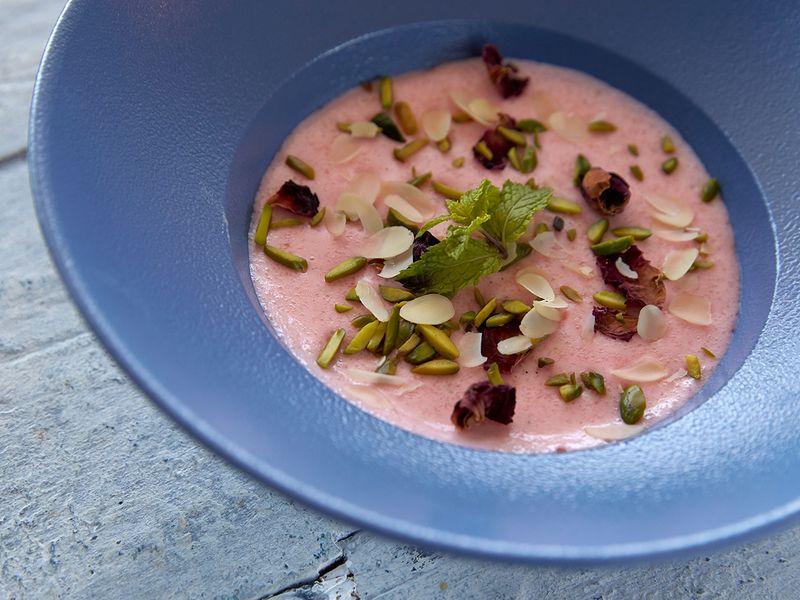
Ingredients
1 litre full cream milk
0.5 gms saffron
50 gms basmati rice
50 gms sugar
250 ml rose syrup - you can reduce the quantity, based on level of sweetness you prefer (Store bought is usually very sweet with some preservative elements. To make your own, in a hot pan add 400 gms sugar with 415 ml of rose water, along with a pinch of salt. Simmer till sugar is melted. Takes 5 to 7 minutes. Take off the flame. Add a couple of tablespoons of rose water to maintain liquid nature, to prevent crystallisation. Then add a few drops of magenta food colouring, such as dried dragon fruit, preferably organic. And your syrup is ready. Store in a glass jar, and use to flavour summer drinks and desserts.)
Dried rose petals (a few to garnish)
25 gms pistachio sliced
5 gms green cardamom (dry roast the cardamom and grind it to a fine powder)
Method
1. Wash the basmati rice in water a couple of times and soak in water for half an hour. This will make the grinding part easier. Using a blender, grind rice to a fairly smooth paste, adding a few tablespoons of milk. Set aside.
2. In a large, thick-bottomed saucepan, start heating the milk on medium-high heat. When the milk boils, add the rice paste and reduce heat to medium. Cook the rice, stirring often to avoid any lumps. In about 10 to 15 minutes, the rice will be cooked. Cook the pudding further till it reduces and thickens, maybe 10 more minutes.
3. Add sugar and rose syrup. Stir well to dissolve the sugar. Taste and add more sugar or rose syrup, if needed.
4. Remove from heat and rest for 5 minutes, but not more than that as the pudding will begin to set as it cools.
5. Transfer phirni to a big serving bowl or individual dessert bowls and cool to room temperature. Refrigerate for a couple of hours so that phirni sets properly.
Serve cold phirni garnished with chopped nuts and dried rose petals.
Have a favourite regional Indian biryani recipe you like? Share with us at food@gulfnews.com



